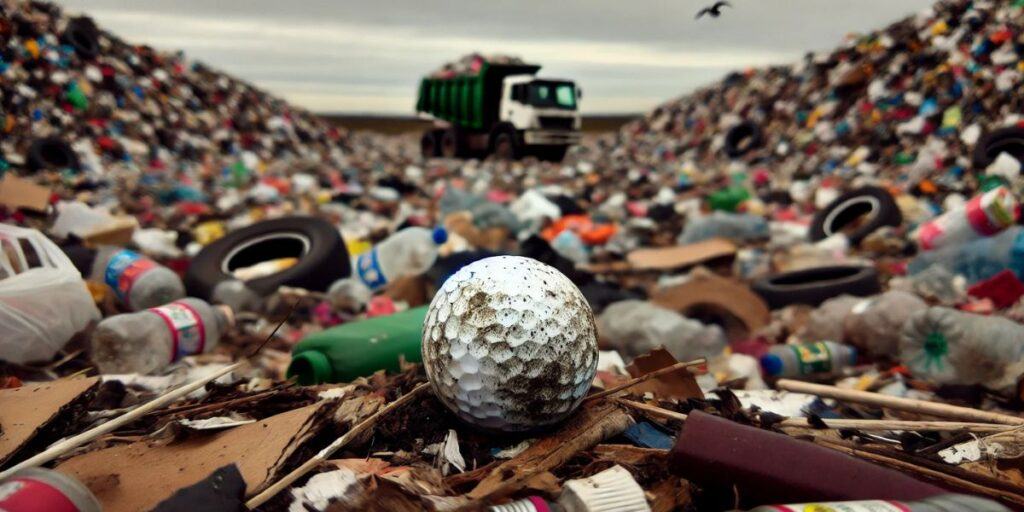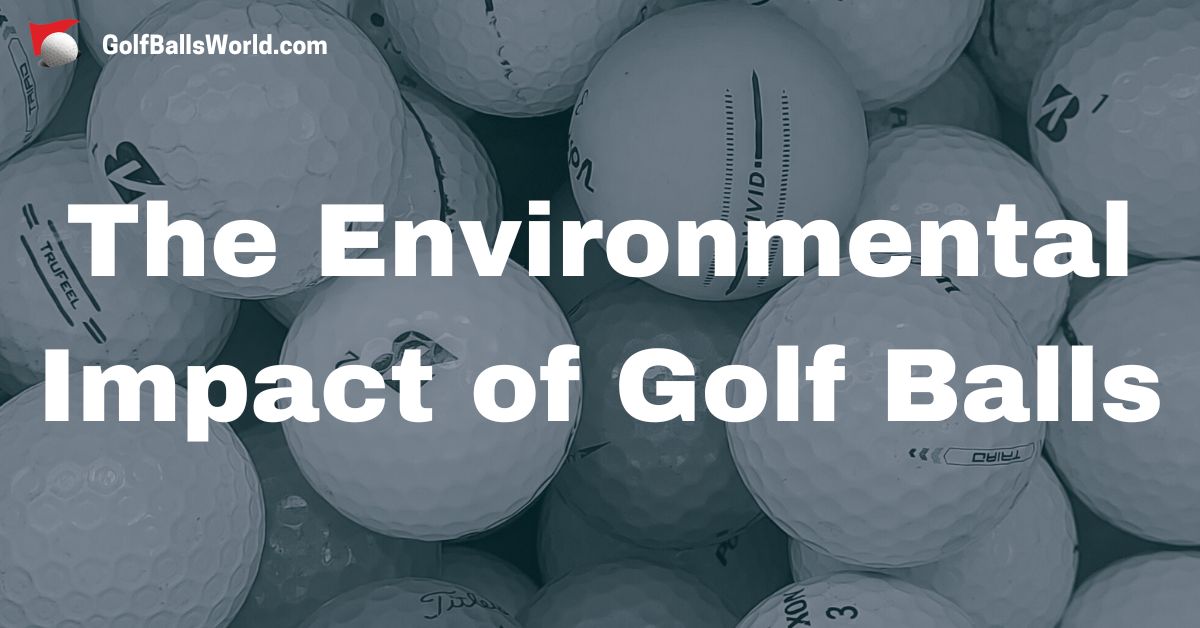We love golfing, don’t we? Whether we have the best round of our lives or a miserable day, something makes us return week after week. In all the excitement we experience on the course, it is easy to overlook the environmental impact of golf balls. How big is it, you ask? Well, it is big enough to be a thing.
As small as they are, when you dig into their production and disposal, there’s a lot to unpack. For one, there are the chemicals in the manufacturing process. Then, there is a large number of lost balls left to deteriorate in nature. Overall, the impact is far from insignificant.
The Golf Ball Lifecycle
Most people aren’t aware of the journey a golf ball takes to get from the factory to the beautiful courses. Understanding this lifecycle gives us a better view of why it’s essential to address the issue. The process starts with raw materials, mainly rubber, synthetic materials, and urethane. These materials undergo intense manufacturing processes, from molding to curing. All those processes consume energy and emit pollutants.
The carbon footprint of manufacturing a single golf ball might surprise you. Energy is required, and this often comes with greenhouse gas emissions. Consequently, all contribute to our global climate crisis. The extensive use of chemicals raises another concern. These substances can leach into water supplies and soil, further impacting ecosystems.
Once a golf ball leaves the factory, it heads to retailers and then finds its way into the hands of golfers. On average, a golfer loses about 100 balls a year, and you can imagine where these end up. While some might be retrieved and reused, many are left in lakes, forests, and even oceans. They’re incredibly durable, which is great for play but not so much for nature. They degrade very slowly, releasing microplastics and harmful chemicals as they break down.
The end of a golf ball’s life is often in a landfill. Very few recycling programs exist for these items. This is due to the complexity of separating the materials used in their construction. Recycling golf balls is not just labor-intensive but also costly. Considering the full lifecycle of a golf ball highlights the need for sustainable alternatives.

Environmental Consequences of Discarded Golf Balls
Golf balls aren’t biodegradable. When they get lost or discarded, they stay around for ages. They break down into tiny plastic particles that can be harmful to ecosystems.
Microplastics from golf balls can make their way into water sources. Besides the environment, they impact human health as well. Once a golf ball starts breaking down, it releases toxic chemicals that leach into soil and water. That process poisons plants and animals alike.
Marine life is especially vulnerable. Countless lost balls end up in oceans, where marine animals can mistake them for food. This can be fatal, leading to ingestion and blockage in their digestive systems. Fish, turtles, and birds are just a few of the creatures affected.
On land, animals like birds and small mammals can be affected too. They might come into contact with the deteriorated materials, putting their health at risk.
Some studies have highlighted astonishing statistics. For example, up to 300 million golf balls are lost or discarded annually in the United States alone. That’s a massive load of plastic and chemicals invading natural habitats.
Recognizing the environmental consequences of discarded golf balls underscores the urgent need for responsible action.
Innovative Solutions for Sustainable Golf Balls
Lately, eco-friendly golf balls have emerged on the market. Companies are creating balls that biodegrade or use sustainable materials.
Biodegradable golf balls are designed to break down naturally. These balls offer a greener alternative to traditional ones. They are made from materials like cornstarch or polyvinyl alcohol. When you lose them, they won’t linger forever and reduce long-term environmental damage.
Eco-friendly balls aren’t limited to biodegradability. Some brands are using recycled rubber and other sustainable materials in their core and cover. This reduces the need for virgin materials, cutting down on the resource use and emissions tied to production.
Of course, switching to sustainable golf balls isn’t without its challenges. Performance and cost can sometimes be a concern for avid golfers. However, many modern eco-friendly balls are closing the performance gap. Soon there might be no need to sacrifice your game for sustainability.
Companies like Albus Golf and Dixon Golf are pioneering green technologies. For example, Albus Golf’s balls dissolve in water, making them ideal for driving ranges near aquatic environments. Meanwhile, Dixon Golf has been a pioneer in offering high-performance eco-friendly options.
Looking forward, continued innovation is essential. Expect to see more brands pushing the boundaries to create golf balls that are both eco-friendly and high-performing. The more the industry embraces these developments, the better the impact on our planet.

Mitigating the Impact
Golf courses and players play a huge part in managing the environmental footprint of our beloved game. Golf courses, as the primary venues, hold significant sway in promoting eco-friendly practices. Courses that adopt green initiatives can make a notable difference.
Implementing retrieval programs for lost balls is one effective strategy. Specialized nets and divers can be used to recover balls from water hazards. These retrieved balls can be cleaned, refurbished, and reused, cutting down on waste and costs.
Recycling programs at golf courses can also help. Setting up collection points where players can drop off used or damaged balls encourages recycling. Also, partnering with companies that specialize in recycling golf balls is a good solution. This ensures that they are processed in an environmentally friendly manner.
Educational programs for players can go a long way. Courses can host workshops or provide reading materials about the environmental impact of golf balls. The courses can highlight the benefits of using eco-friendly options and raise awareness. Players knowledgeable about these issues are more likely to make conscientious choices.
Golfers themselves have an important role. For one, they can choose to buy and use biodegradable or recycled golf balls. Subsequently, they will support the market for these products, driving further innovation and availability. Additionally, players can practice better on-course habits. Simple things like retrieving lost balls whenever possible and disposing of damaged ones responsibly.
Driving Change for a Greener Game
Waking up to the environmental impact of golf balls is only the first step. Golf enthusiasts, manufacturers, and course managers must team up for a more sustainable future.
The collective effort can drive substantial change. When everyone pitches in, the cumulative effect can be profound. Each action brings us closer to a greener game. It influences not just the golfing world, but our environment as a whole.
The push for greener golf can also inspire other sports to follow suit, creating a broader impact. It’s all about making smarter choices on and off the course. In the end, it is up to you to advocate for sustainability and lead by example.

